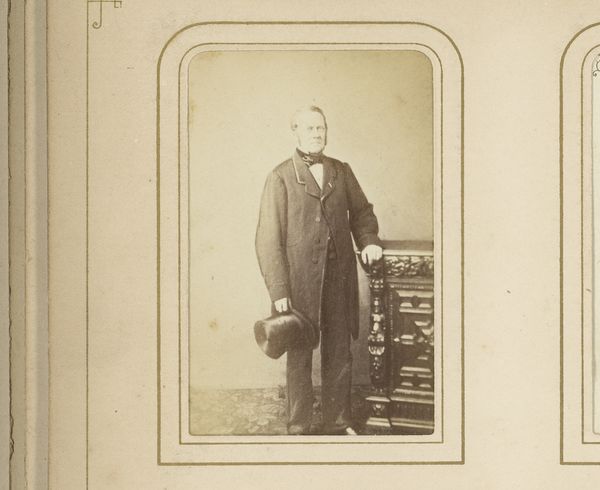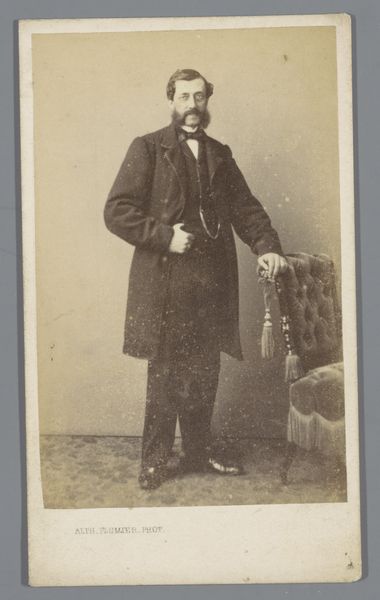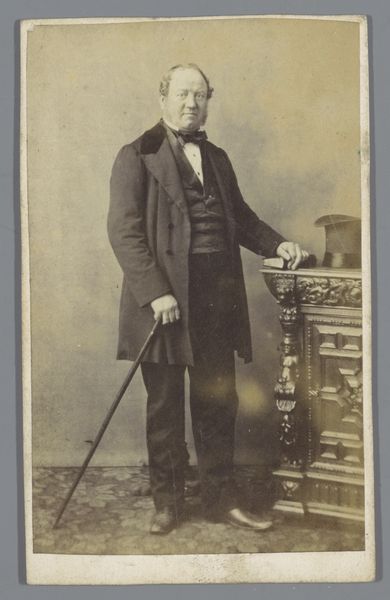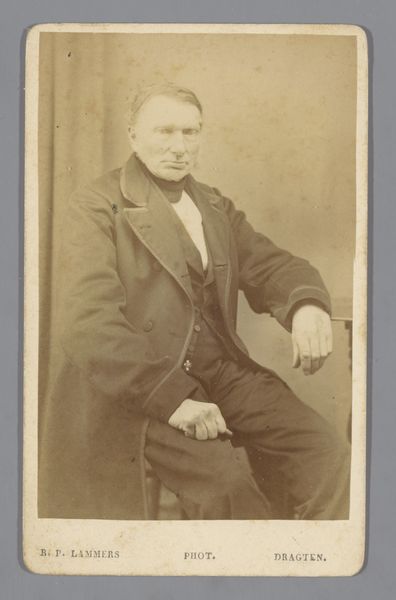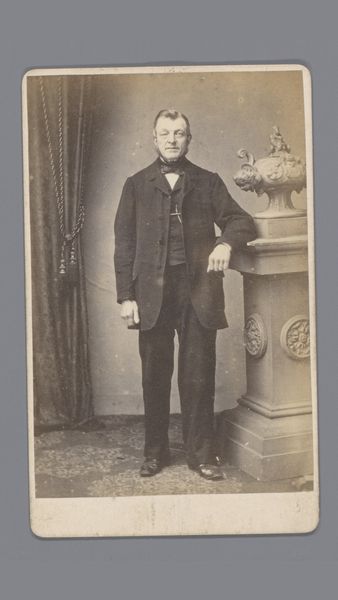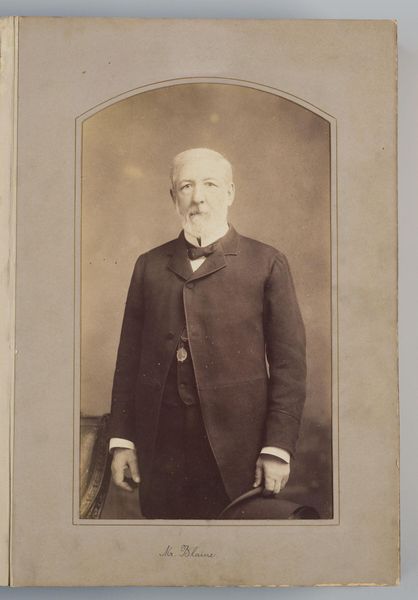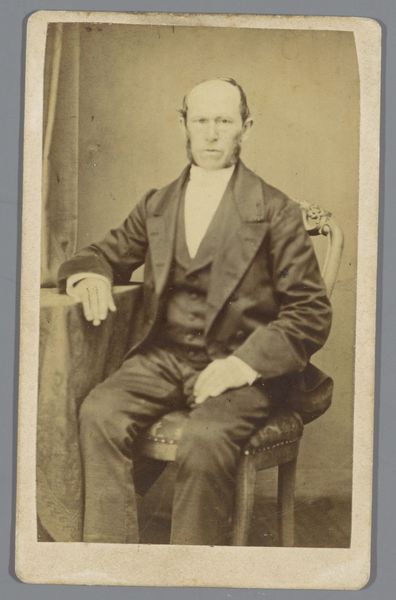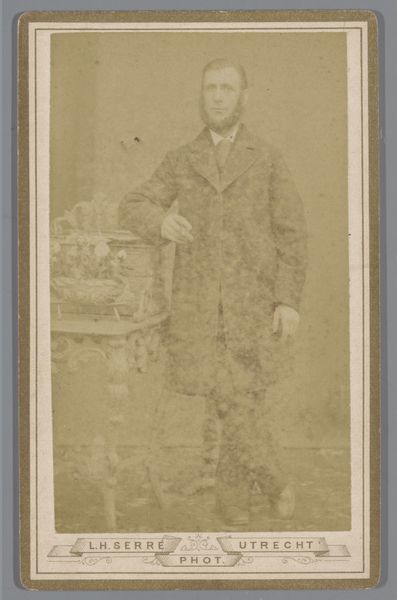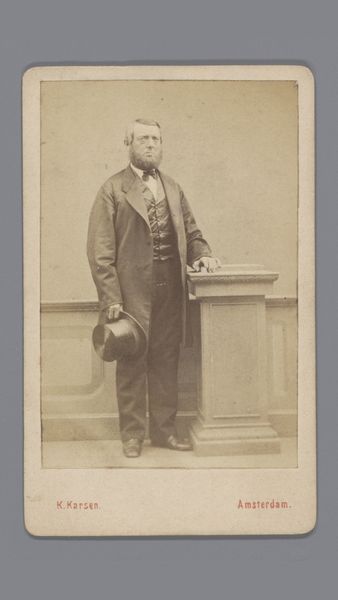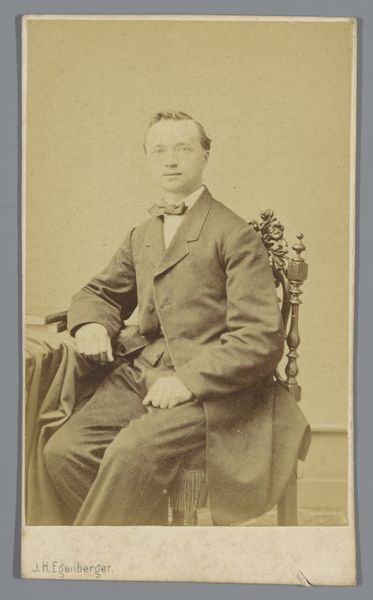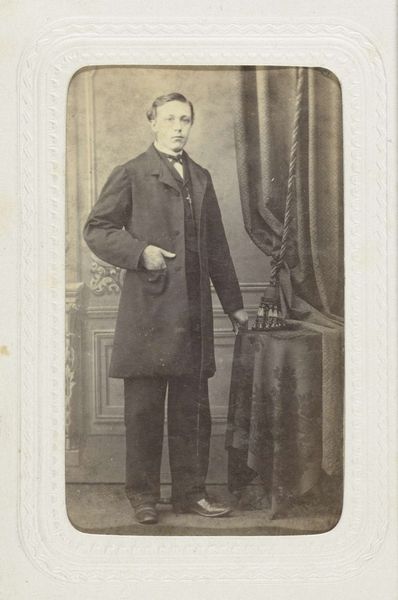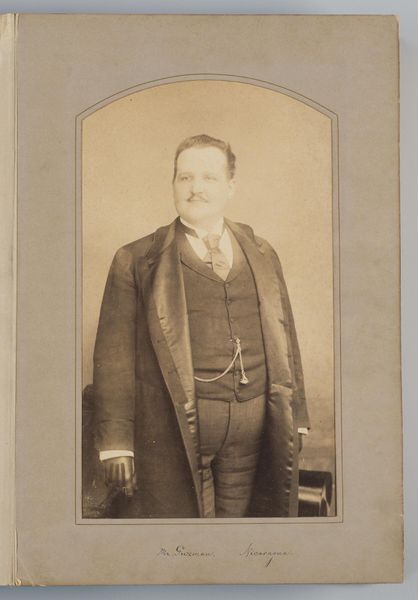
photography, gelatin-silver-print
#
portrait
#
photography
#
historical photography
#
gelatin-silver-print
#
portrait drawing
#
realism
Dimensions: height 135 mm, width 95 mm
Copyright: Rijks Museum: Open Domain
Editor: This is a gelatin silver print titled "Portrait of a man with beard, standing by a chair of branches," created sometime between 1880 and 1920. The man's formal dress contrasts oddly with the rustic chair. What stands out to you when you look at this? Curator: I notice the power dynamics at play. Consider the historical context: photography in this period was a privilege. Who had access? Who was being represented, and how? This man’s formal attire signifies a certain class, but the twig chair throws a wrench in that reading. Is it a symbol of rural simplicity or forced humility? The deliberate choice of this backdrop and prop subtly interrogates notions of social status. Editor: So you're saying that the photograph isn't just a simple depiction, but a statement about class? Curator: Precisely! And think about representation itself. The act of photographing someone, especially someone who may not typically have had access to that medium, is inherently political. Who is Sander van der Zijl? Did he take the photograph, or commission it? That gives us insight into his identity. Editor: That makes me wonder, too, about the gaze. Is the subject empowered or objectified by being photographed? Curator: It’s a valid question. Does he have agency in how he’s presented? The rigid pose suggests a controlled image, fitting within societal expectations. The gaze, though direct, also seems guarded. Does that signal societal pressures of masculinity or status? Editor: Thinking about this photograph in terms of power structures and social context really changes how I see it. I hadn't considered the photographer's role as an interpreter of social dynamics. Curator: Exactly! And that is how we engage with art. By questioning its social, historical, and theoretical framework, to uncover a richer understanding.
Comments
No comments
Be the first to comment and join the conversation on the ultimate creative platform.

